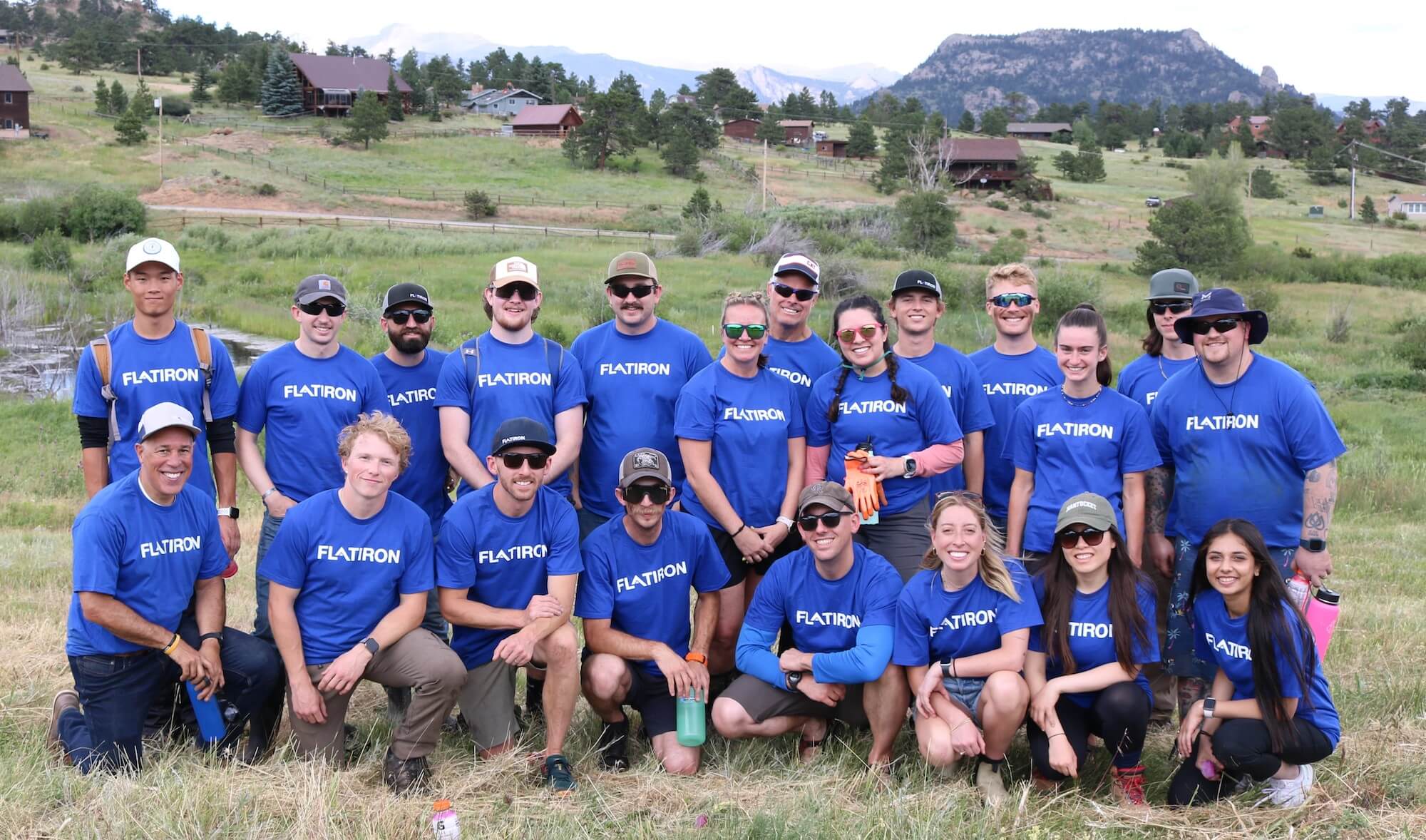Sustainability
Flatiron Helps Repair Colorado Flood-Damaged Floodplain

Approximately 25 Flatiron team members traveled to Estes Park, Colorado, the site of a devastating 2013 flood that is still causing problems for the local ecosystem. The volunteers, several of them interns, worked on simulated beaver structures. Flood currents devastated the original habitats, stealing surface water and then drying out habitats.
Did you know that beaver ponds are habitat for many insects, birds and fish species? Beavers are ecosystem engineers because they create, modify, and maintain habitat and ecosystems. They consequently have a large impact on the biodiversity of an area. The structures they create make for natural breaks in water channels, making flows more manageable and allowing the water more time to soak into the ground.
Our volunteers also planted 30 native, 10-gallon container plants and roughly 300 native tree stakes. Tree stakes, especially along stream banks, create a root mass that holds soil along the banks. Without a strong root mass, the soil is more likely to wash away during high waters, heavy rains and rapid snow melts. (source Penn State Extension)
According to the Estes Valley Watershed Coalition, Flatiron’s partner in the service project, the goal is to restore the local floodplain, bring back wildlife and make it more resilient to fire and flooding. Miranda Patrick helped organize the service project. “We’re a construction company that builds things, but we also care very much about the nature around us,” she said. “This was a great experience to come out and do this.”
The service project is one example of how Flatiron is following through on our sustainability commitment to protect biodiversity and build stronger ecosystems.
Learn more about what we did in this Estes Park Trail Gazette article.
